Before Dystopian Wars
Spartan Games sprang onto the scene in 2008, announcing plans to launch not one but two naval games that year. One was a fantasy naval game called Uncharted Seas (US). The other, a spaceship combat game called Firestorm Armada (FA). US did see a mid-2008 release, but FA was pushed back all the way to late 2009. While Uncharted Seas was well received, FA made an even bigger impact.
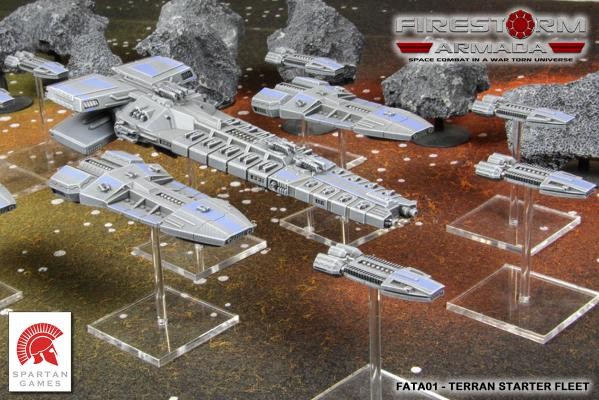
FA gained a lot of attention as the first major space miniatures game released in quite a while. It’s affordability, originality and quality of the models, and entertaining (if somewhat cumbersome in places) rules made it quite popular. Spartan was clearly on a roll, with two hit naval games in a row. Little did many suspect that the launch of what would turn out to be its biggest property was just around the corner.
Lightning in a Bottle
In October 2010, Spartan announced it’s third game, which would have a “Victorian science fiction” setting. The game was to be called Dystopian Wars (DW), and took place in an alternate 1870. Less than two months later, in December 2010, the first wave of Dystopian Wars products hit the physical and digital shelves of stores world wide. It felt like DW had come out of no where; Spartan did a good job, it seems, of keeping the development under wraps until production was underway. This approach always runs the risk of missing out on opportunities to build buzz, but in the case of DW it hardly mattered. The game proved to be very popular, and many retailers had difficulty keeping stock available. Despite featuring mechanics that were broadly similar to US and FA, DW seems to have had a much broader appeal to the wider gaming market than either of those games. What made it so appealing is a topic for a different post, but the important take-away is that Spartan’s third miniature game in as many years was off to a roaring start!
2011: Explosive Growth
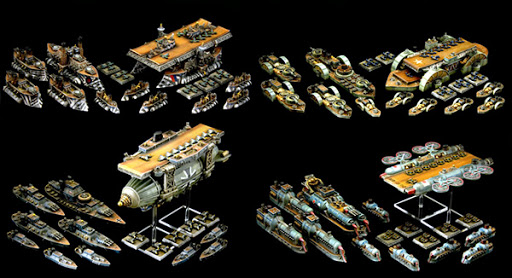
The initial wave of releases included fleet boxes for the Kingdom of Britannia, Federated States of America, Prussian Empire, and Empire of the Blazing Sun. Each of these boxes had a substantial amount of models in them; a battleship, three cruisers, 10 frigates, 10 fighter tokens, and 2 metal bombers. Each of the 4 initial factions also got a carrier of some kind; the Britannians and Americans got naval carriers, where as the Blazing Sun and Prussians got flying carriers. The Prussian carrier, the Imperium, rapidly became one of the most famous models in the whole line.

Releases kept on coming over the rest of the spring and summer. Medium airships, dreadnoughts, destroyers, escorts, and ground forces for the four main factions all followed within the first 6-7 months of the initial launch. By July, DW players had to ability to fight battles over land, sea, and air all on the same table.
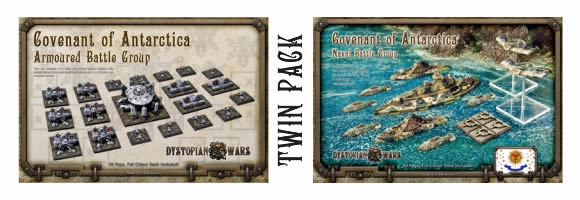
In September, Spartan announced the release of a fully-fledged 5th faction, the Covenant of Antarctica. The Covenant release would include both a naval and ground starter box, which was a departure from the first 4 factions which didn’t see their ground forces launch until 6 months after their naval forces. This meant that Covenant players were able to rapidly catch up to the first 4 in terms of model count and play-ability. The Covenant models also came with a number of new abilities and weapons types, the rules for which were detailed in a separate rule booklet that was included in the starter boxes and was also made available for a nominal fee from the Spartan store. Speaking of the other 4 factions, they were not left out; each one got a “special” model in the same wave as the Covenant launch, including the John Henry robot for the Americans, the Vanguard submarine for the Brittanians, the Ika mechanical squid for the Blazing Sun, and the Metzger robot for the Prussians.

The Covenant would get their special model, the Callimachus Time Dilation Orb, the following month. Spartan also started releasing a series of civilian and military buildings to be used as terrain with the game. These included factories, houses, bunkers, aircraft hangars, and the like, and would end up rounding out the DW releases for 2011. By any measure, the first year of Dystopian Wars had been undeniably strong. A steady stream of releases for the game ensured that from a standing start in December 2010, more than 80 different models available for the game by December 2011. As impressive as that was, Spartan was only getting warmed up.
2012: Final Core Factions And Campaigns Arrive
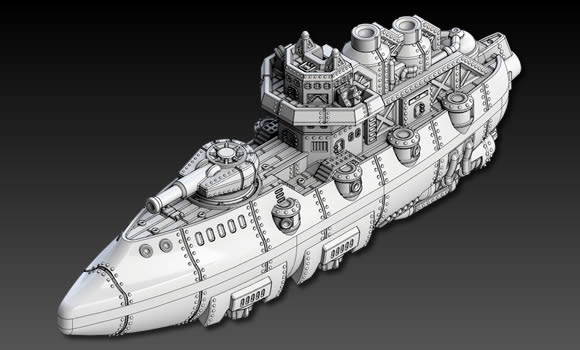
Hot on the heels of the launch of the Covenant line, Spartan introduced the Republique of France, the 6th major faction for the game. The French were teased the year before, when a flying French Magenta-class battleship was made as a promotional model for Gencon 2011. It appears that the French were originally intended as a second tier power, and that the Magenta was going to be a one-off model. However, it was so well received that Spartan expanded the concept into a fully fledged faction, which was actually announced via email newsletter on Christmas Day 2011. As with the Covenant, the French naval and ground forces launched at the same time. Originally planned for a February release, the French ended up getting pushed back to March.
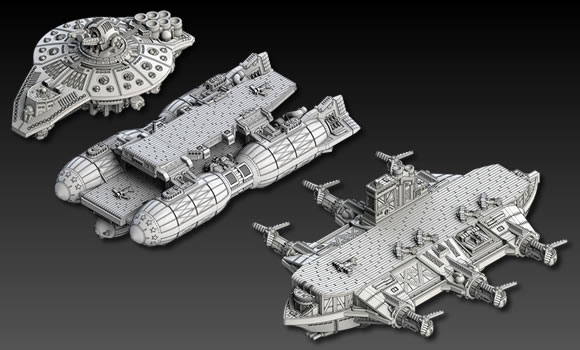
Carrier Power
February did see a number of Dystopian Wars releases, however. This wave was dominated by aircraft carriers of various types for the first 5 factions. As a game that incorporated land, sea, and air forces simultaneously, Dystopian Wars had the capacity to represent aircraft carriers that operated in all three mediums. All through the game’s first year, however, not all factions had access to to models that reflected that possibility; for example, the Americans had a floating naval carrier, but not a flying aircraft carrier. The Prussians, meanwhile, were in the opposite situation. The wave of releases in February 2012 corrected that issue by filling out the “missing” models, and also added the “Mobile Airfields” (ground-based carriers). in all three realms. Also coming out in February were gunships for each of the factions, a type of medium naval support unit.
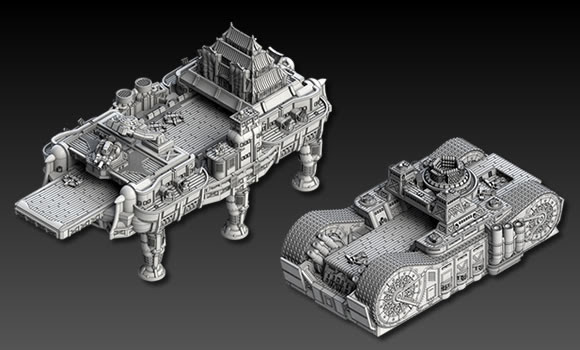
Vive La Revolution!
A month later, in mid-March 2012, the French finally arrived. As with the Covenant launch the year before, the French forces arrived with both their naval and ground starters, enabling those interested in the faction to get “both feet wet” when compared to their more established counterparts. As with the Covenant models, Spartan continued to push the envelope in terms of detail and complexity, while also establishing a visual style that was distinct from the other factions that had been released so far. In fact, I maintain that the French ships in DW are actually the most “realistic” in terms of their closeness to real ship designs from roughly the same period. Another parallel with the Covenant is that the French again introduced a slew of new rules and weapons to the game that were detailed in a separate booklet included with the box sets. The French also launched with two “special” units, the Epulard submarine and Toulon armored cruiser, giving them a lot of flexibility early on in the naval realm.

Rules Consolidation
In early 2012, there was a growing problem brewing with DW in the rules department. To start with, Spartan was notorious for issues with its rulebook layouts and structuring. While it is fair to say that the company steadily improved in this area over the course of its life, the original DW rule book was early enough that it suffered from many classic flaws associated with Spartan’s rules. A year of explosive growth that saw the release of two new factions and more than a dozen upgrade models had exacerbated the problem by adding numerous special rules and abilities to the game which were not included in the original rule book. Spartan’s initial solution for this problem was to post revised statistics and FAQs on its website, but it seems that was proving inadequate as the company chose instead to publish a revised rulebook (the “1.1 Edition”) in late February 2012. Starting in March 2012, DW players could have the option of buying the new rules, or getting a free “upgrade booklet” in hard-copy at their local store or digitally from the Spartan website. Essentially a consolidated FAQ, this booklet in conjunction with the first edition rulebook would allow players to have a no-cost alternative to buying the new book. Spartan also offered the Black Wolf submarine for the first time as a freebie when ordering the new book from their store, perhaps to soften the blow of the first edition book going obsolete after barely a year.
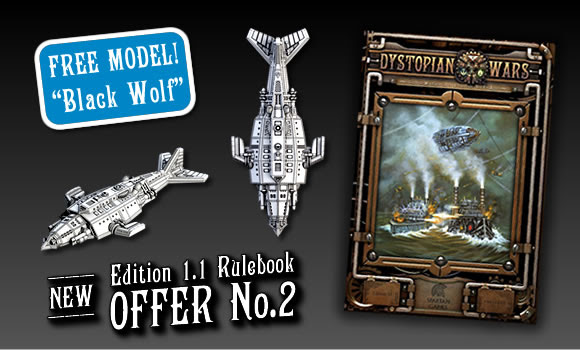
Hunker in the Bunker
The April releases for DW significantly expanded game play depth for the first five factions. First up, a set of fortifications was released that consisted of a large bunker and smaller towers. The models were cleverly designed such that they could be used for both ground and naval games, and also marked the first time that Spartan had designed and released scenic elements for the game.
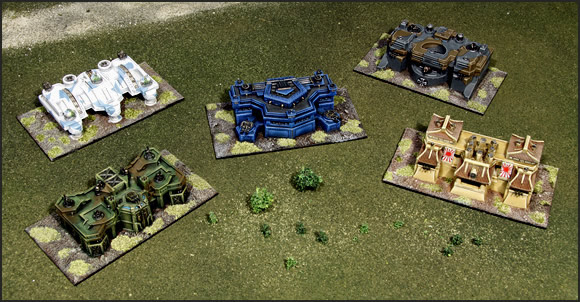
The other major part of the April 2012 releases were the small flying models for the first 5 factions. This release was significant because under the DW list building rules you needed to be able to field units from the Small, Medium, and Large/Massive categories to field a “pure” force in one of the three mediums (ground, naval, and air). Up until this point, only medium and large/massive flying models were available, which meant that you couldn’t have a “legal” game using just aerial models; they always had to be taken as an adjunct to a ground or naval force. The arrival of small flyers changed all that, as it now allowed players to create forces of nothing but aerial models, effectively opening up a new avenue of play for the game.
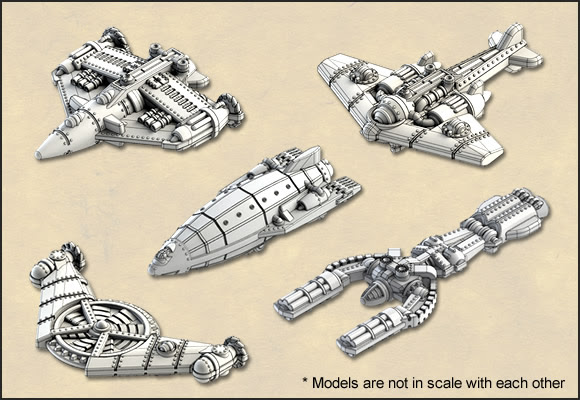
Flushing Out the French
The DW releases for May and June 2012 were mostly for the French. In May, the French received their medium flyers, support cruisers, destroyers, dreadnought, small flyers, and mobile airfield. In June, Spartan finished the job of catching up the French to the first 5 factions by releasing the larger flyer, sky fortress, bunker, and tower. As a consequence, the French now had access to every major model type that the other 5 factions did, which took an already strong faction and made them arguably the strongest in the game at that time. If not the strongest, they were certainly the most flexible! It seemed that the French had a tool for every job.
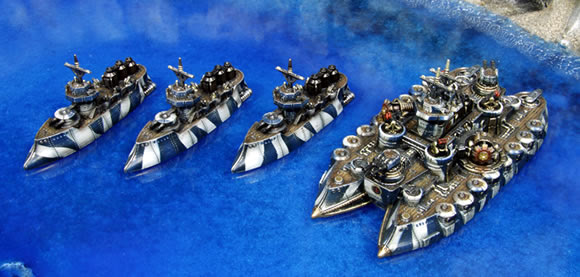
Also in May, Spartan started released in the large non-carrier flying models for the first 5 factions, both individually and as part of full aerial battle group box sets (which included small, medium, and large flyers). Rounding out the releases for May-June was the Olympic-class transport, which was essentially a re-creation of the RMS Titanic in DW. Intended as a commemorative model on the 100th anniversary of the famous disaster, the Olympic was an interesting model in its own right that marked the first non-military craft for the DW range.

The First Campaign
July marked a major milestone for DW, as Spartan released the first of several campaign books, Hurricane Season, for the game. Lavishly detailed and illustrated, Hurricane Season provided a bonanza of background information on the Dystopian world, new scoring rules, and a series of scenarios for gamers to play. The book describes an attempt by the Blazing Sun and Prussians to wrest parts of the Caribbean from the Britannians and Americans, with the Covenant trying to foil the plans of all four of them.
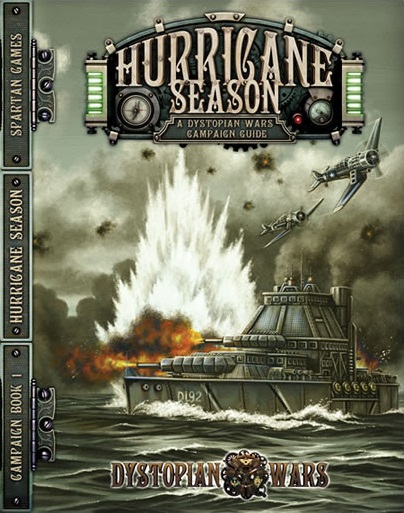
This wave of releases also included mall, medium, and large landing craft for the game, which opened up the possibility of conducting amphibious landings from the sea. Interestingly, the large landing craft included 7 unique bridge structures to customize it for a specific faction. 6 of them were for the already released factions, while the 7th was for a faction that would not release for another month; the Russian Coalition.
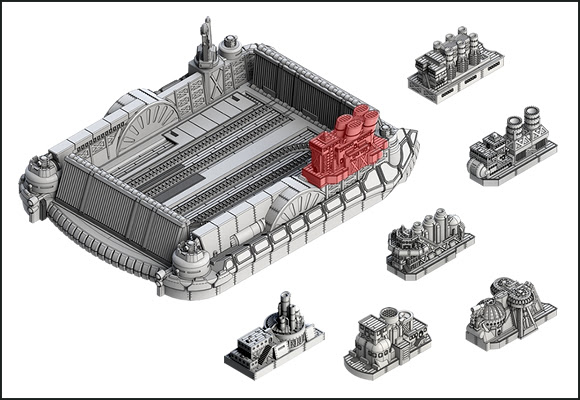
The Russians Are Coming!
The month of August 2012 saw the 7th (and as it turned out, final) “core” faction release for the game, the Russian Coalition. The release followed a pattern familiar from the Covenant and French launches. In early August, the first wave of Russians became available, including the naval and ground starter boxes, destroyers, gunships, medium flyers, and two unique land units (a repair vehicle and a land dreadnought). The second wave in late August included the Russian fortifications, naval dreadnought, and another unique land unit, the “Land Driller.”
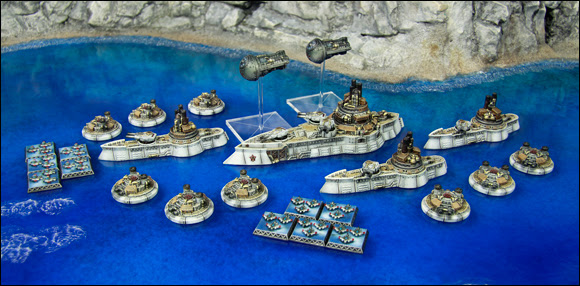
Alliance nations made their first appearance in September 2012, in the form of ground forces for the Polish-Lithuanian Commonwealth and the Dominion of Canada. In October, the Russians picked up a number of additions to round out their forces, including their small and medium tanks, large airship, and their naval escorts. The Black Wolf submarine, previously only available as a special premium, was offered for general sale. A generic set of infantry tokens was also released. Rather than try to depict individual troops, these tokens used symbols to indicate the type of troops (such as Riflemen or Engineers) the token represented, along with slots for miniature dice that indicated the strength of that unit.
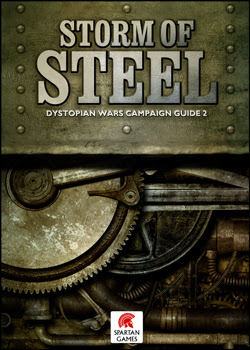
All of these models were featured prominently in the second campaign book, Storm Of Steel, which rounded out the October releases. Where as Hurricane Season had a Caribbean setting, Storm of Steel focused on a continental European struggle between Britannia, Russia, France, Prussia, and their various allies. Interestingly, the book contained rules and pictures for factions that wouldn’t release until the following month, including forces from Belgium and Denmark.
More Alliance Nations and Core Upgrades
In November 2012, Spartan released the models for the remaining alliance nations that were features in Storm of Steel, including the Kingdom Of Denmark, Protectorate of Belgium, and Prussian Scandinavia. As with the Polish-Lithuanian and Canadian models released earlier in the year, these were not fully fleshed out factions in the same way that the 7 “core” factions were. Instead, they were intended to provide a bit of flavor and variety when included with a one of the core factions. The final releases for the year were models that were marketed as “upgrades” for the core factions. These included a repair ship for the Russians, battlecruisers for the Britannians and Prussians, an alternate scout gyro for the Blazing Sun, a new tank and a skimming frigate for the French, and a new tank for the Americans. Only the Covenant did not get a new model in this wave.
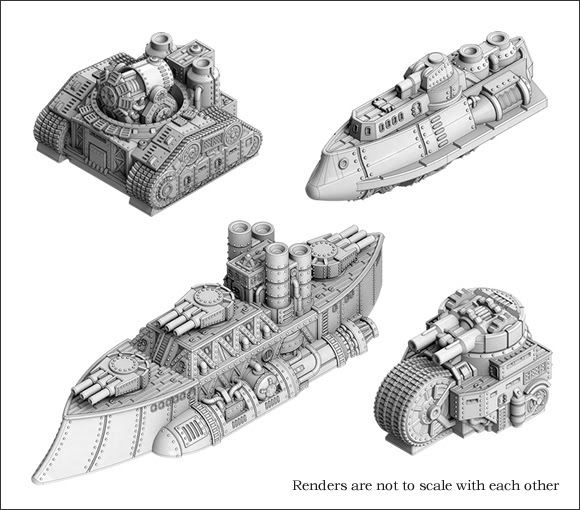
2012 In Review
Overall, 2012 proved to be an even bigger year for DW than 2011, with over 90 new models joining the range, which by then was pushing 200 different sculpts once you factored in all of the terrain pieces as well as the vehicle models. Even more important than the raw model count, however, was the enormous expansion in the scope of the Dystopian world. By the end of 2012, all 7 of the major powers were firmly established in both background lore and in their tabletop presence. Significant amounts of history and numerous scenarios has been added to the game via the two campaign books. New avenues of expansion were added thanks to the addition of allied fleets. As if that wasn’t enough, 2012 also saw the launch of the first Dystopian Wars spinoff game, in the form of a 28mm skirmish game called Dystopian Legions, which began to ship in November. Speaking of spin-offs, 2012 also saw the arrival of Studio Sparta, which made a number of terrain pieces and even a H.G. Wells-inspired “Invaders” faction that was compatible with DW but not really canonical.
Coming up In Part 2
As 2012 came to an end, both Spartan and DW were having great success. The increasing number of factions and increasing depth of the game was successful in both holding on to existing players and attracting new ones. In the second part of this series, we’ll see how things panned out over the course of 2013 and 2014! Until next time…

I actually painted the first pre-production models for the DW range, which were not the dark schemes that came along later. You can see a couple at http://www.conflictincolour.com
Then the studio decided on a gritty finish for the box art.
Fascinating! Thank you for the insight, Mark. FWIW, I rather like your take on the models. I was never a huge fan of the air-brushed style used on some of Spartan’s studio models.
Pingback: Dystopian Wars: A Brief History (Part 2) | Man Battlestations Blog
Pingback: A Brief History of Dystopian Wars (Part 3) | Man Battlestations Blog